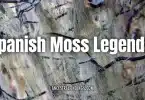Tucked away in the misty folds of West Virginia’s Appalachian Mountains lies Greenbrier County—where folklore seems to breathe as vividly as the wind whispers through the trees. In the late 19th century, it was here that an eerie tale unfolded, blurring the lines between the living and the spectral, challenging our beliefs about the afterlife. The mysterious death of Zona Heaster Shue in 1897 and the subsequent trial of her husband, Erasmus Trout Shue, on charges of murder, remains a haunting narrative of love, betrayal, and spectral intervention.
A Love Marred by Ominous Beginnings
Zona Heaster, a local beauty known for her vibrant spirit and gentle demeanor, caught the eye of the recently arrived blacksmith Erasmus Trout Shue. Trout was a man shrouded in mystery, having lived outside the community before he came to work in Greenbrier. Despite her mother, Mary J. Heaster’s visceral misgivings about him, Zona fell quickly and deeply, leading to a swift marriage. This union was viewed with suspicion by Mary, who sensed a dark shadow lurking behind Trout’s charming facade.
The Day of Despair
On a bleak winter day in January 1897, the unsettling tranquility of Greenbrier County was shattered. Trout, appearing unusually agitated, requested a neighbor’s boy to check on his wife, claiming he feared she had suffered an accident. The boy’s discovery was chilling: Zona Heaster Shue lay dead on her home’s floor. Trout’s reaction to his wife’s death was peculiar and unsettling. He took control of the funeral preparations with an intensity many found unnerving. Zona was dressed in a high-neck dress with a stiff collar and a veil secured in a voluminous bow under her chin—an outfit that seemed more suited for hiding marks of violence than for mourning.
Disturbing Observations and Last Rites
At the wake, attendees noted the strange behavior of Trout, who kept a vigil by the head of the coffin, allowing no one to come close. The positioning of Zona’s scarf, ostensibly to keep her head from moving, did little to quell whispers that something was amiss. Her head appeared unusually loose and tilted in a way that seemed unnatural, even in death. Despite these harrowing signs, the local doctor, who briefly examined Zona, initially cited her cause of death as “everlasting faint” and then later as childbirth, which only deepened the mystery as there was no public knowledge of pregnancy.
A Mother’s Visceral Grief and Spectral Visitations
Driven by a mother’s intuition and unresolved grief, Mary Heaster was tormented by the loss of her daughter and was soon consumed by nightly visitations that she claimed were by Zona’s spirit. These apparitions were not fleeting; instead, they were vivid interactions during which Zona allegedly confessed to her mother that Trout had brutally attacked her in a fit of rage, breaking her neck. Armed with her ghostly testimony, Mary urged the local prosecutor to reopen the case, leading to the exhumation of Zona’s body.
The Autopsy Revelation
What the autopsy revealed was as shocking as it was conclusive. Zona’s neck was indeed broken, with her windpipe crushed and finger marks on her throat—silent testaments to the violent end she met. The evidence was irrefutable and led to Trout Shue’s arrest and a trial that would become a focal point for supernatural and legal intersect.
Trial and the Ghostly Witness
The trial of Trout Shue was a sensation that attracted attention far beyond Greenbrier County. In a courtroom packed with onlookers, Mary Heaster took the stand, delivering testimony as heartrending as it was fantastical. She recounted the nocturnal visitations by her daughter, detailing Zona’s ghostly accounts of murder. While focusing on the physical evidence, the prosecution could not entirely dismiss the spectral evidence that had initiated the judicial proceedings.
After a brief deliberation, the jury found Trout Shue guilty of first-degree murder, influenced no doubt by both the physical evidence and the unsettling implications of the ghostly visitations. He was sentenced to life in prison, where he later died, shrouded in the infamy of his actions and the eerie circumstances of his trial.
Legacy of the Greenbrier Ghost
The story of Zona Heaster Shue lives on in the annals of American folklore, marked by a state historical marker near the scene of her untimely demise.
It tells the tale of a woman whose voice sought justice from beyond the grave and found it. This is the only known case in which testimony from a ghost helped convict a murderer.
As I left the hauntingly beautiful landscapes of Greenbrier, the tale of Zona Heaster Shue lingered in my mind—a poignant reminder that sometimes, the truth is stranger than fiction, and justice has ways of manifesting that are as mysterious as they are profound. This story, wrapped in the spectral mists of West Virginia, continues to intrigue and unsettle, a testament to the enduring power of love and the relentless pursuit of truth, even from beyond the grave.
Learn More:
“The Haunting of Zona Heaster Shue: The Greenbrier Ghost Chronicles” by Nancy Richmond
It is also the true account of the only known case in US history where the testimony of a ghost helped to convict a murderer in a court of law. The event took place in the Appalachian Mountains of West Virginia in 1897. Numerous photographs, court documents, letters, and official records present a real-life accounting of the legend.






